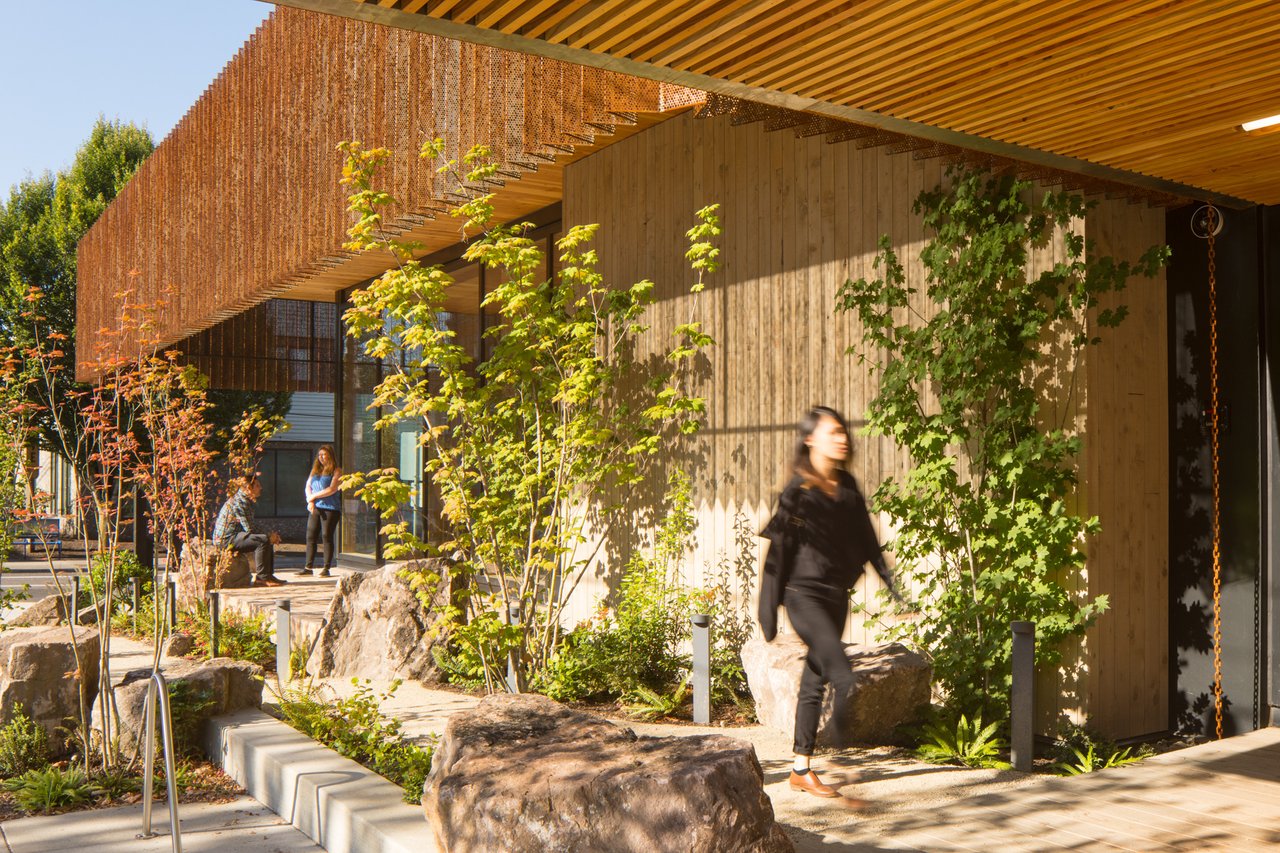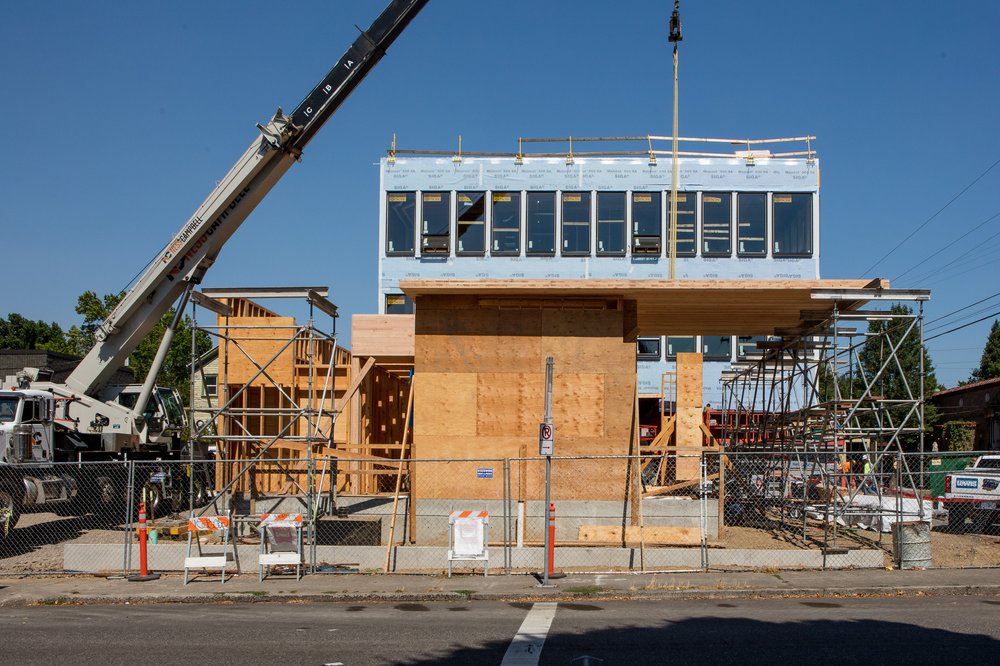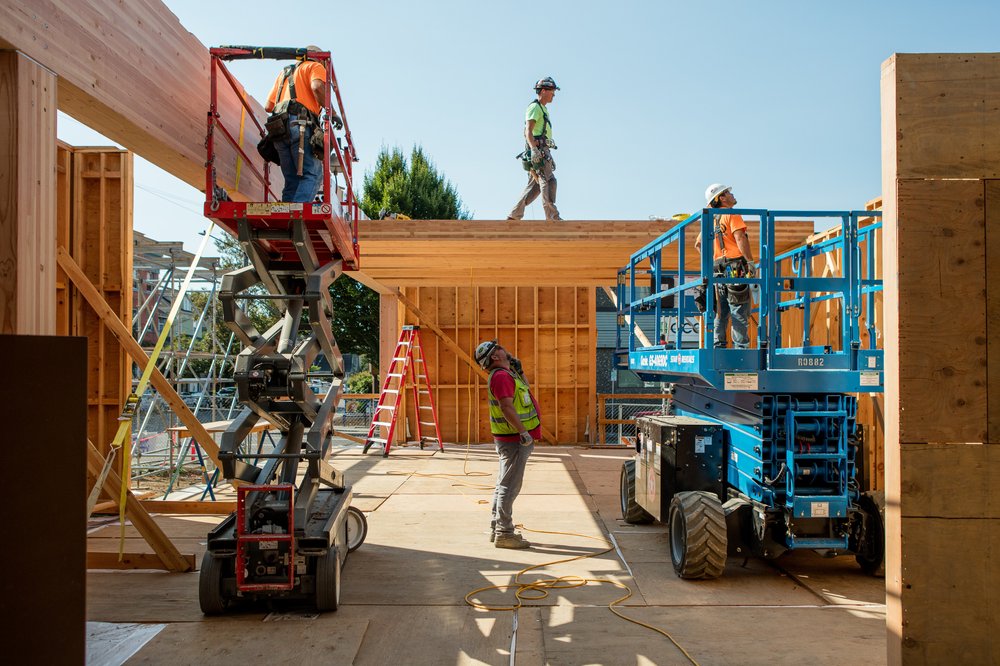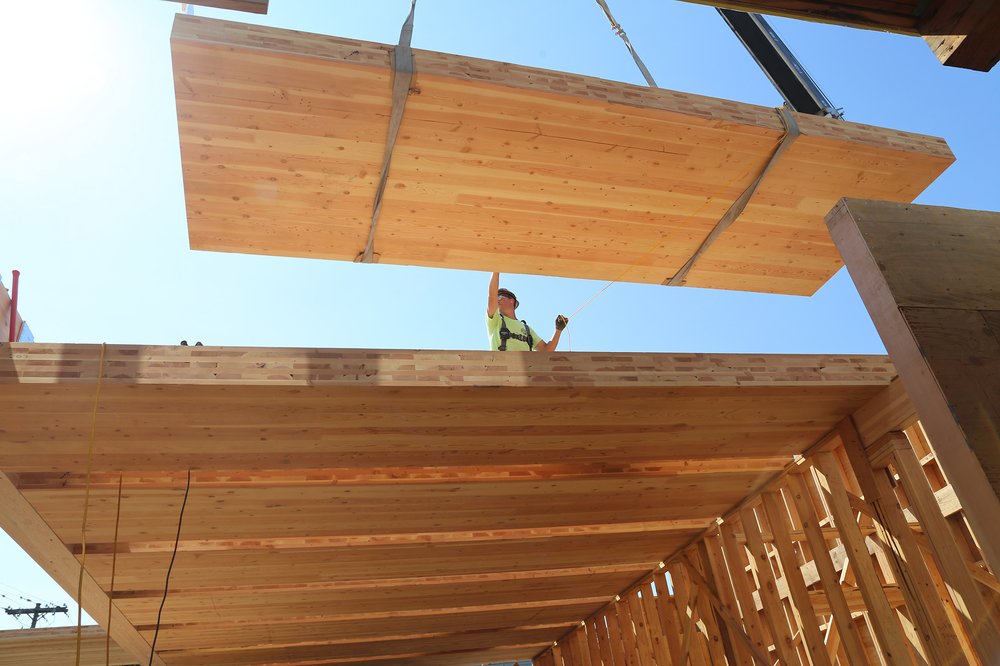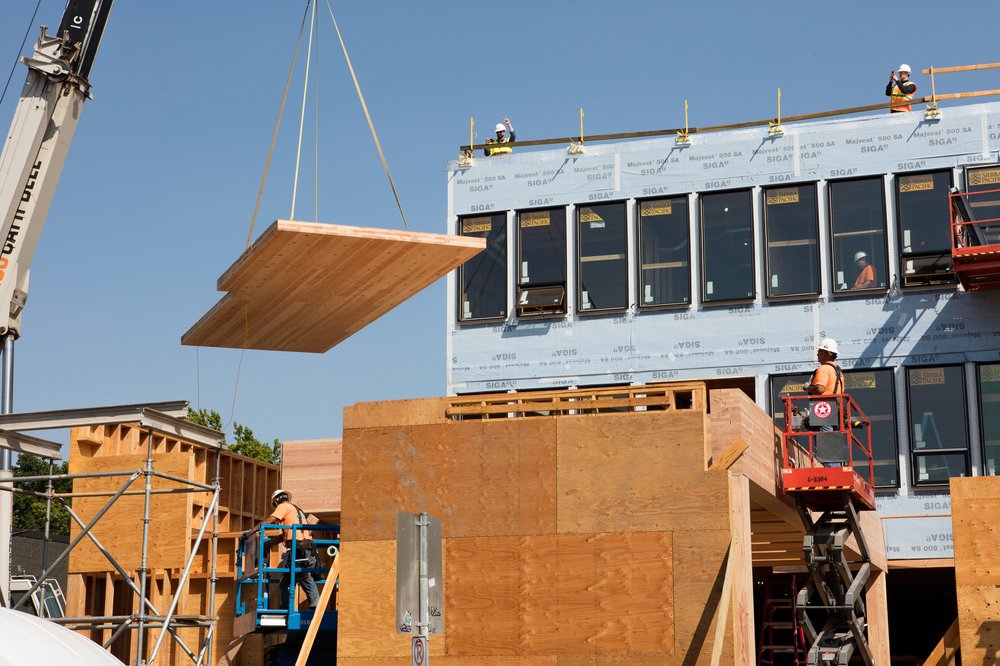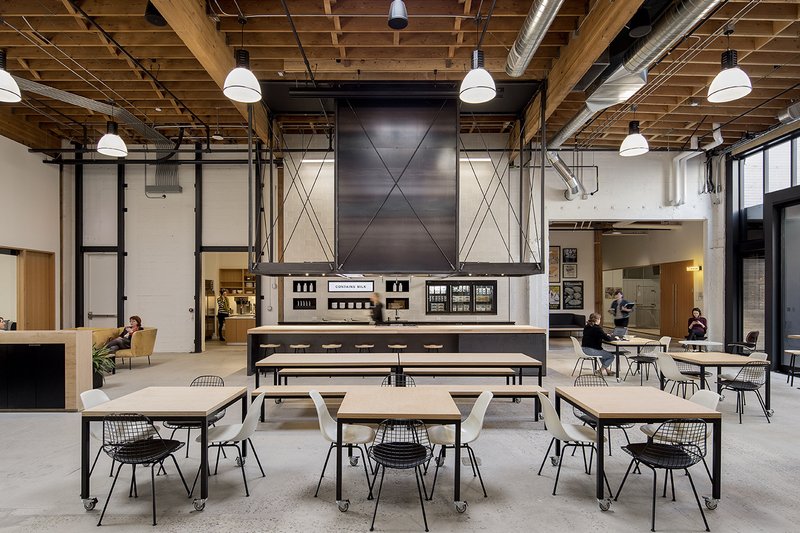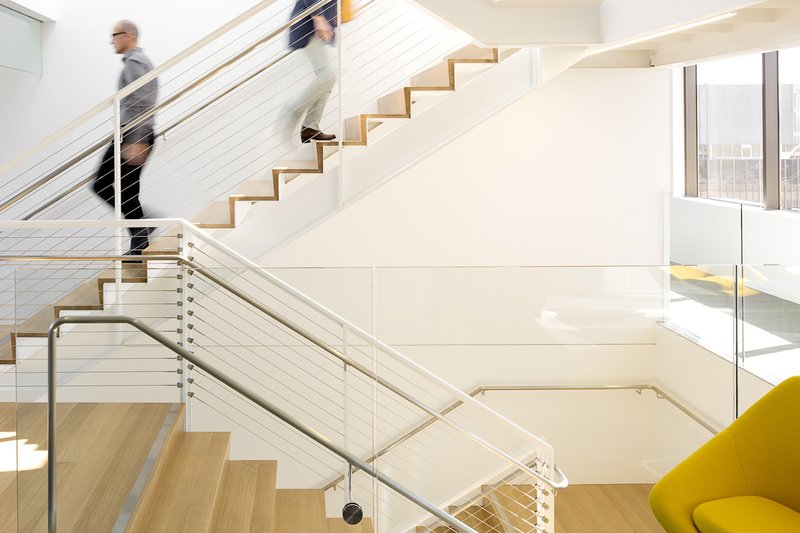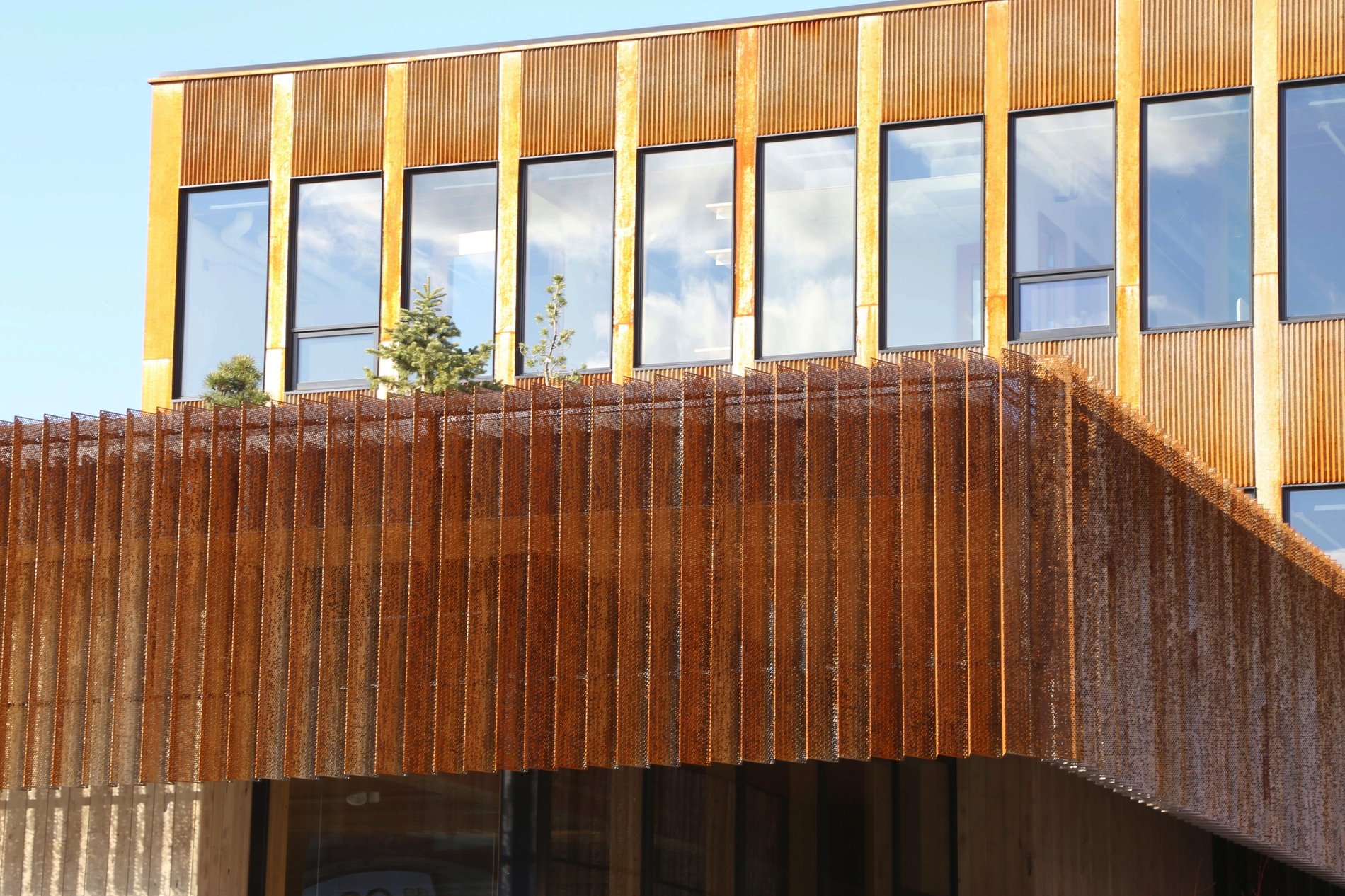
Oregon Conservation Center
This renovation and expansion of The Nature Conservancy’s Oregon headquarters transforms a dated office building into a collaborative hub that reflects the mission of this environmental nonprofit. Built in the 1970s, the original building’s prosaic exterior and landscaping did little to promote the visibility and identity of this global nonprofit. Inside, the dark, siloed office layouts and lack of sizable meeting or event space posed challenges for this collaborative organization.
To create an outward expression of The Nature Conservancy’s work in Oregon and to connect staff and visitors to nature, the design integrates materials and plantings specific to their priority projects around the state. New landscaping evokes three of the organization’s protected habitats: the Rowena Plateau, the Cascade-Siskiyou region, and western hemlock and cedar forests. The building exterior is completely reimagined with steel cladding that weathers over time, as well as Juniper siding and Cedar decking which were both sustainably harvested from The Nature Conservancy’s conservation sites.
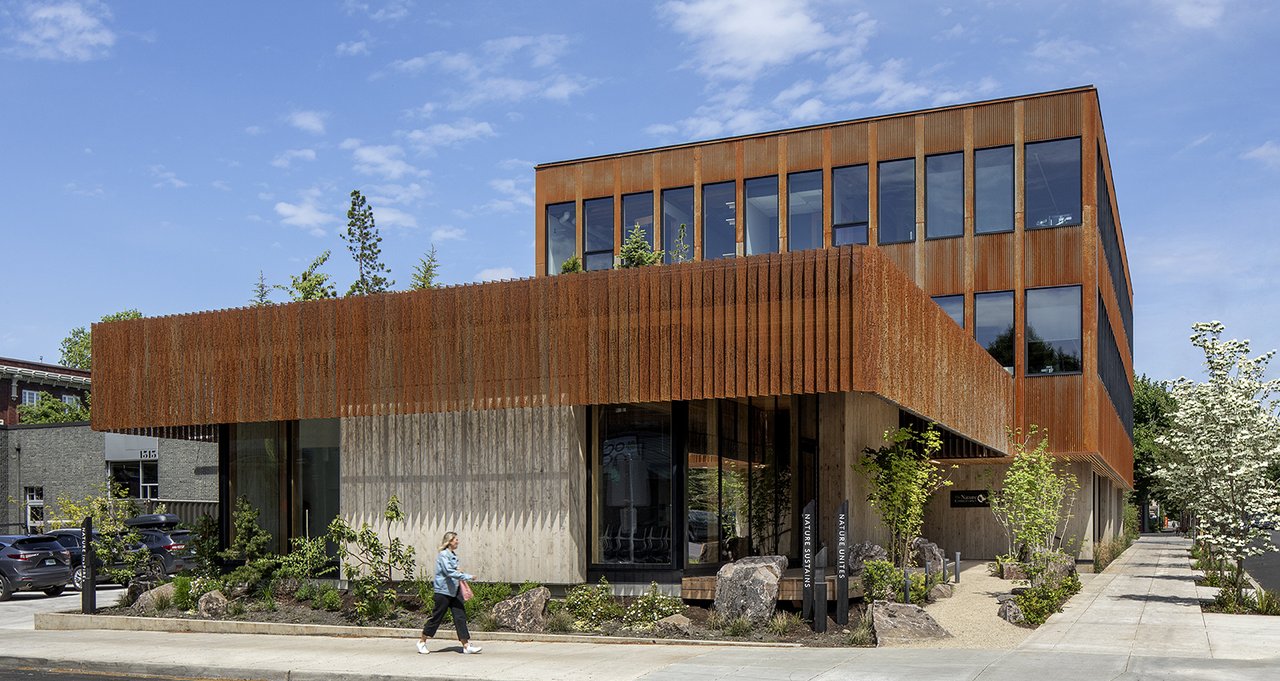
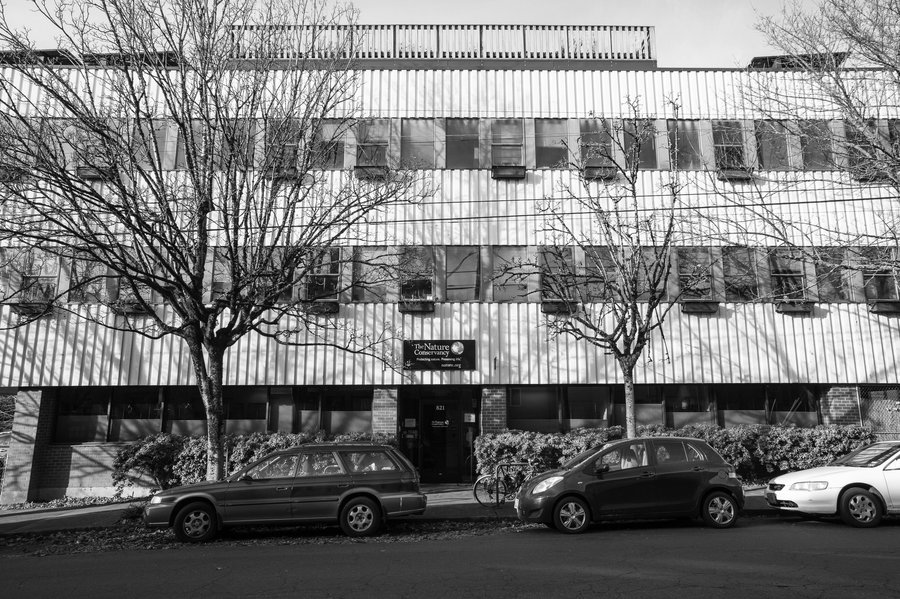
Original Building
The original office building did not convey The Nature Conservancy’s mission, promote the organization to the wider community, or support its collaborative culture and functional needs.
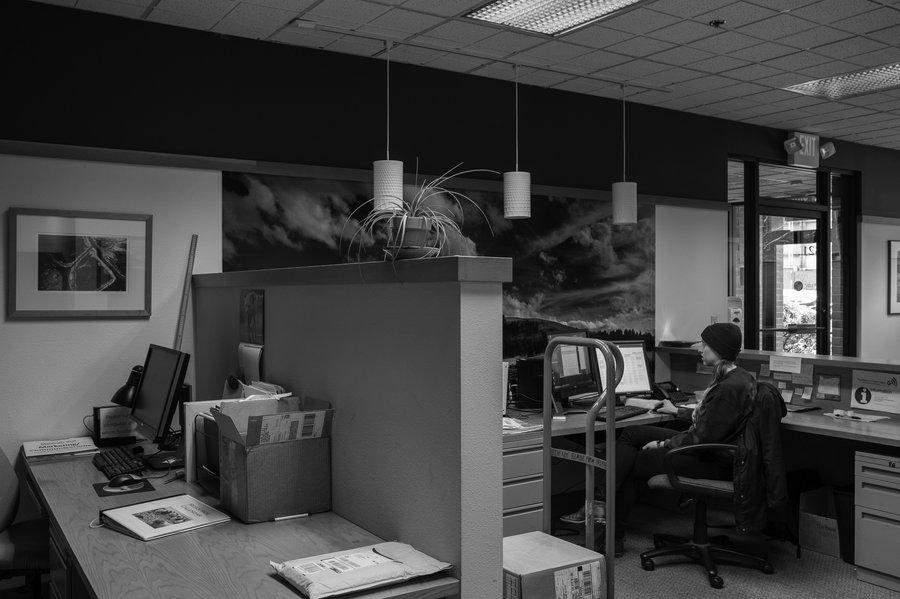
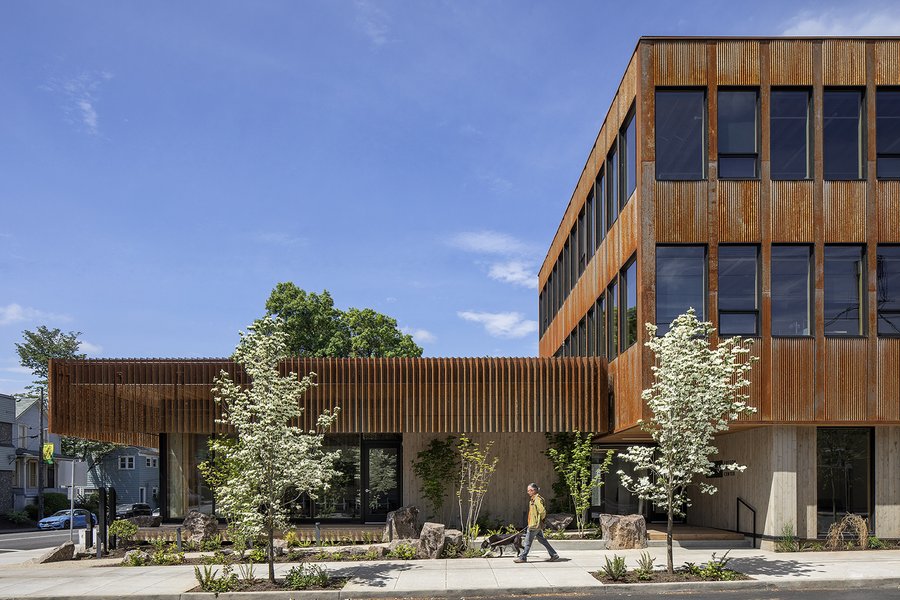
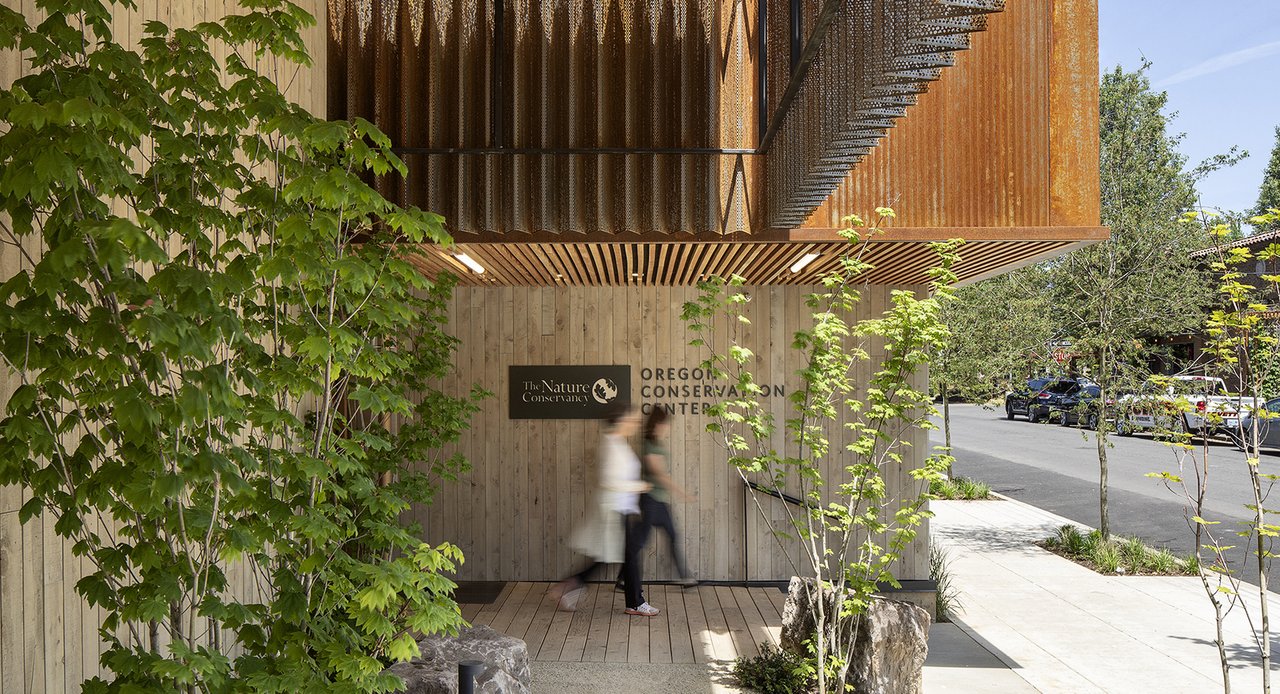
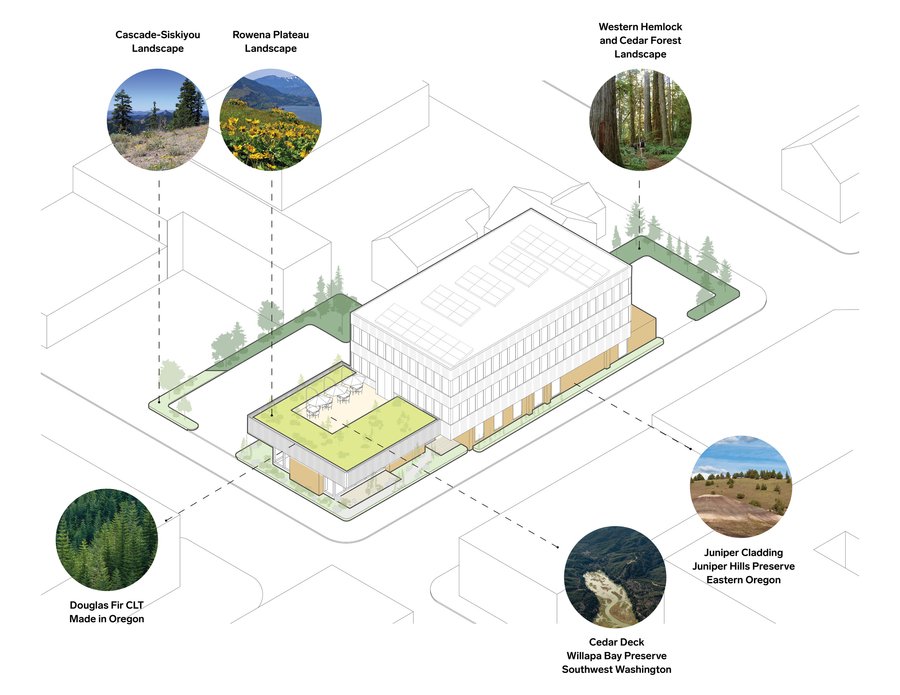
Materials with Meaning
The renovation makes visible The Nature Conservancy’s vital work. The design evokes landscapes across the state through the inclusion of plantings and materials that have been sustainably sourced from the organization’s conservation sites or from regional manufacturers.
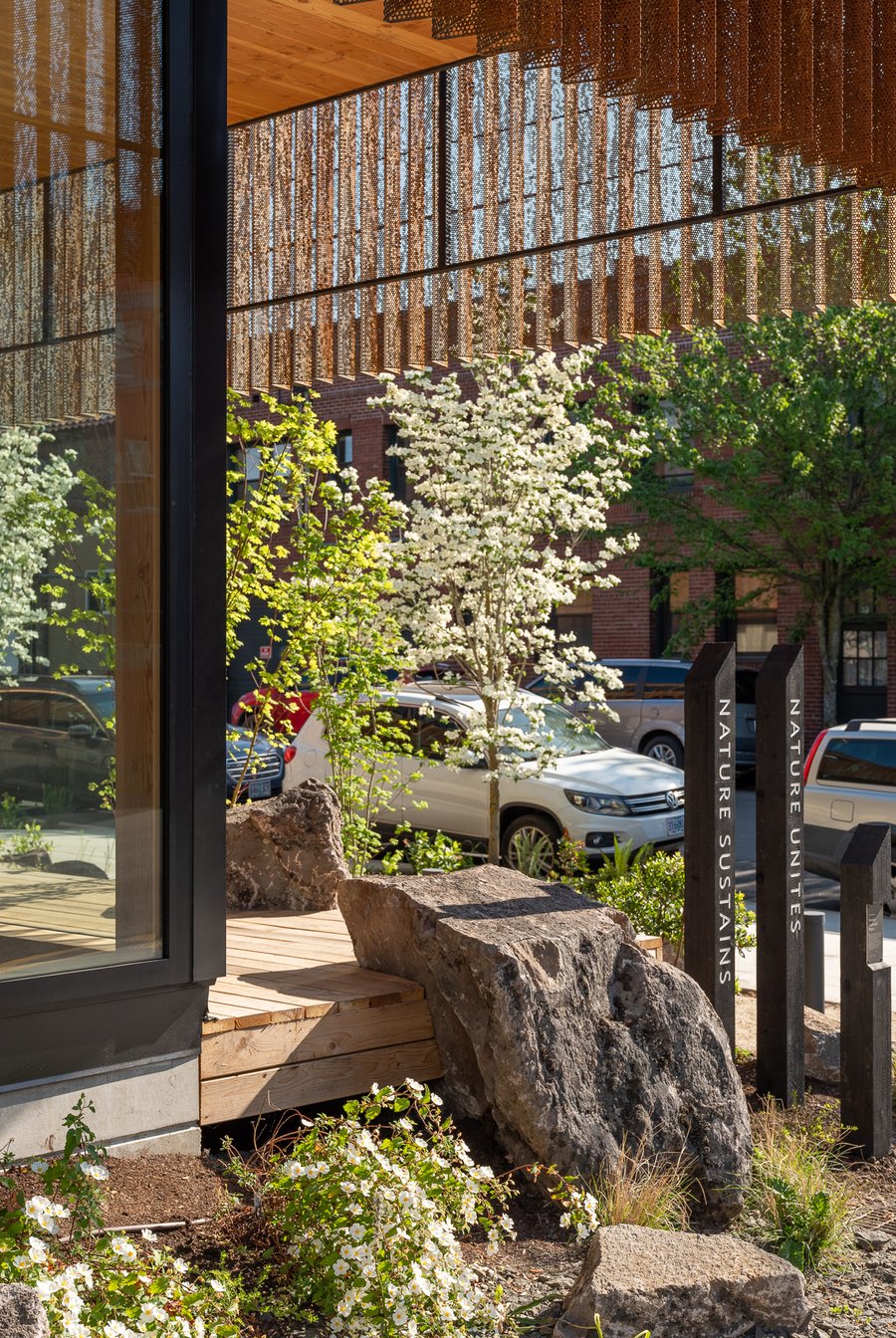
The landscape design evokes three distinct natural habitats across the state.
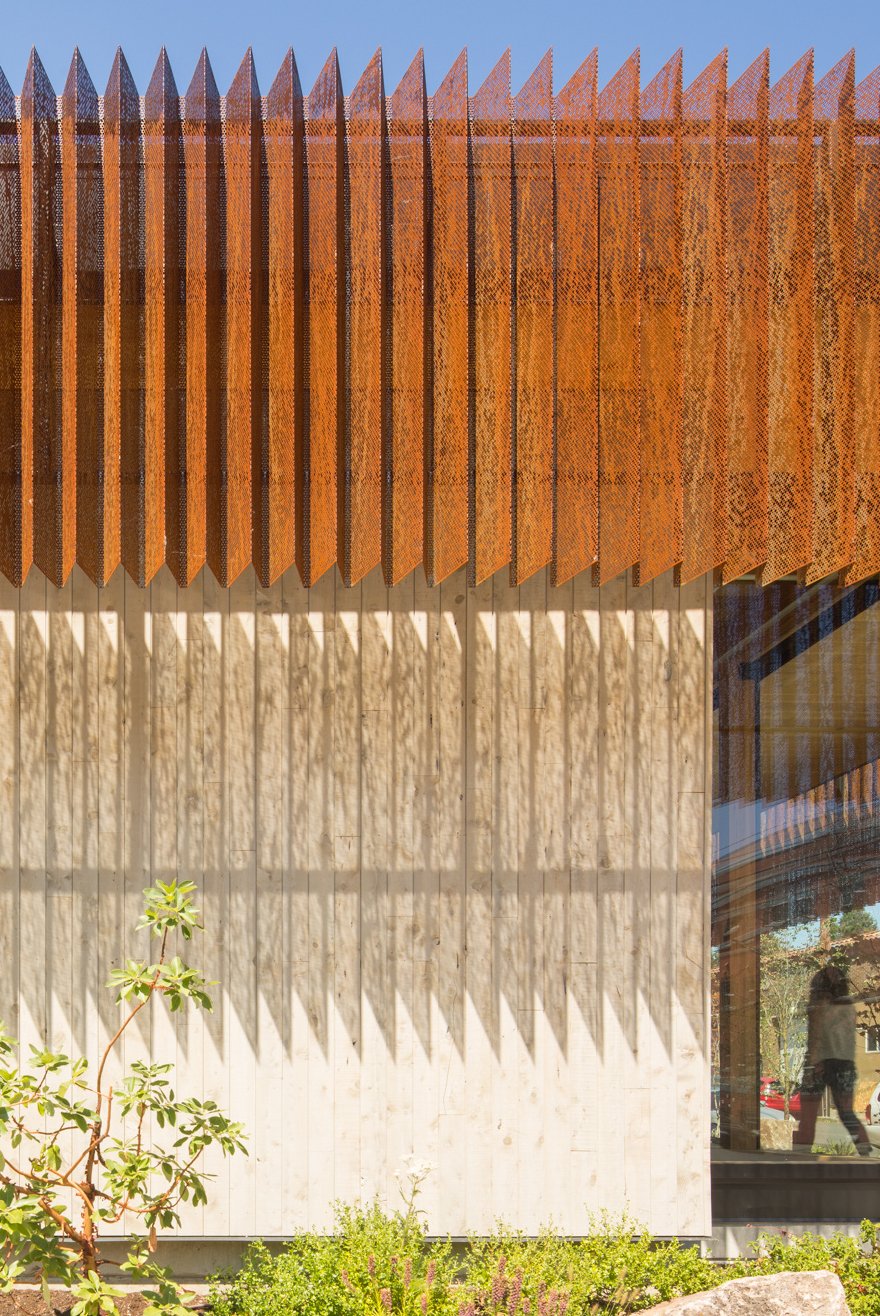
Material for the Juniper cladding and Cedar decks was sustainably-sourced from Nature Conservancy preserves in Oregon.
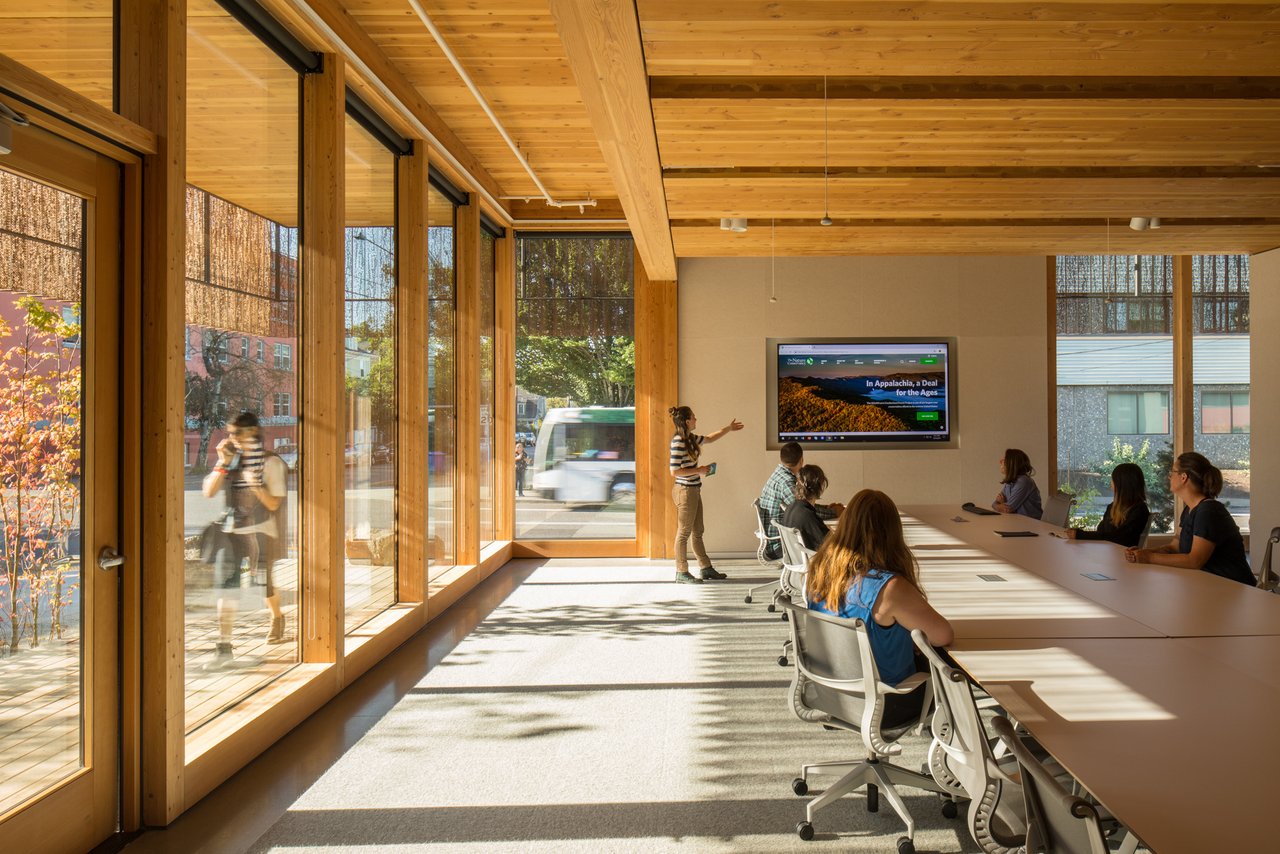
The new conference and event space helps The Nature Conservancy engage partners and the community in new ways.
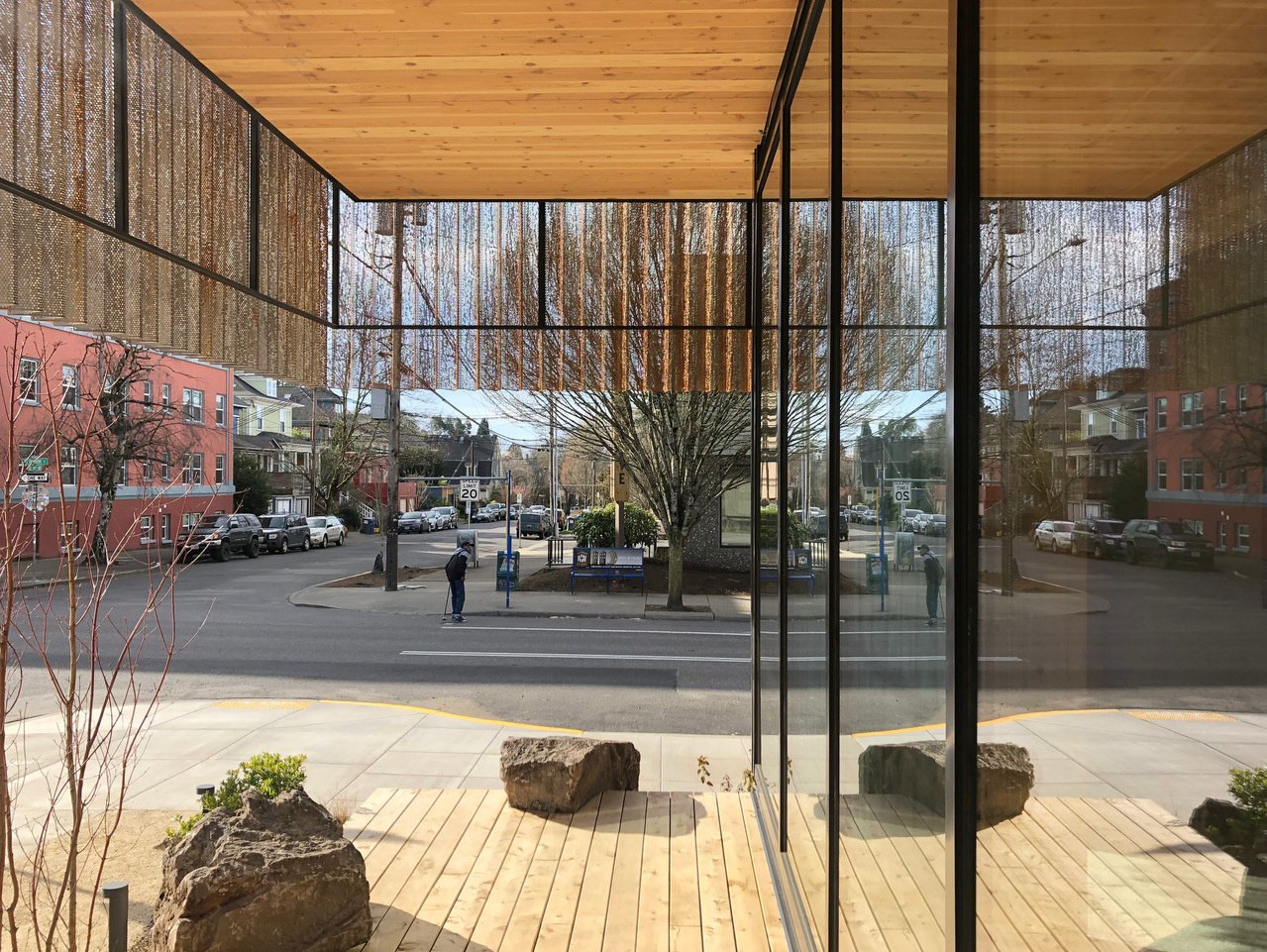
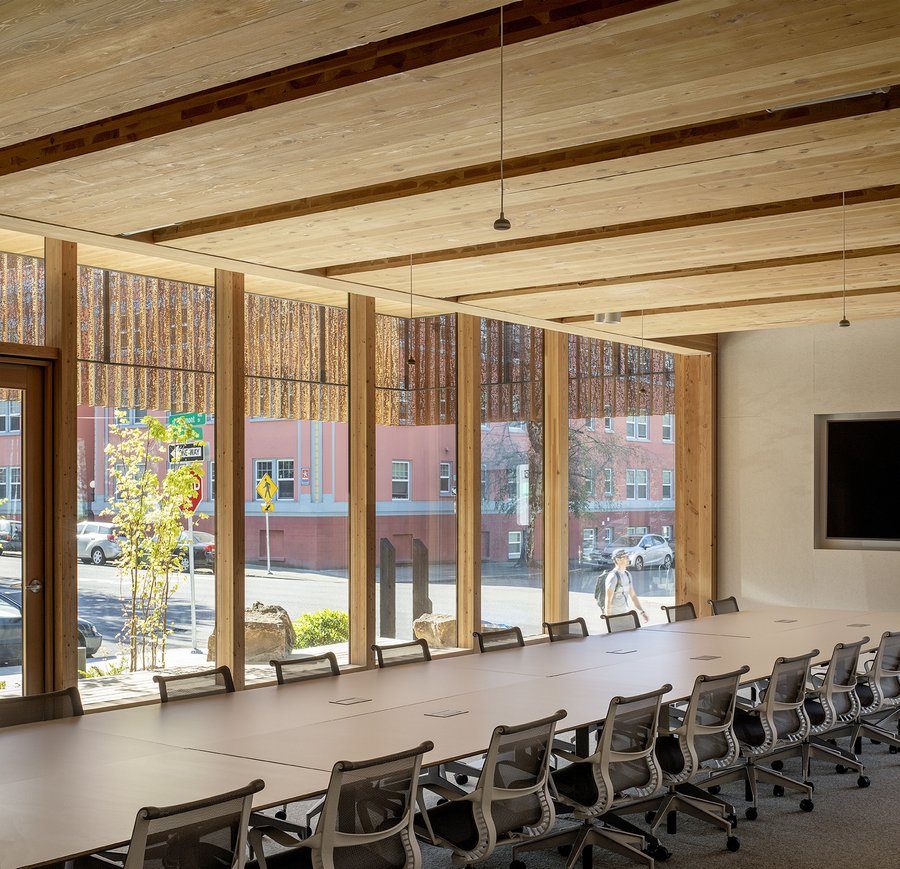
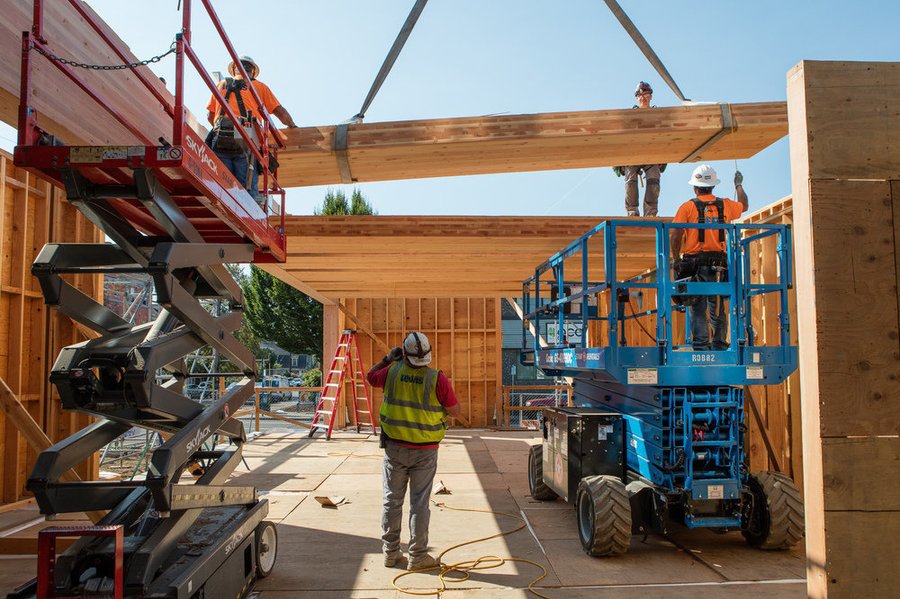
The addition is one of the first buildings in the US made from domestically-fabricated Cross-Laminated Timber (CLT) that is certified by the Forest Stewardship Council (FSC).

The design's new light-filled, open layout supports The Nature Conservancy's collaborative and non-hierarchical culture. Original wood ceilings were refinished and left exposed.
